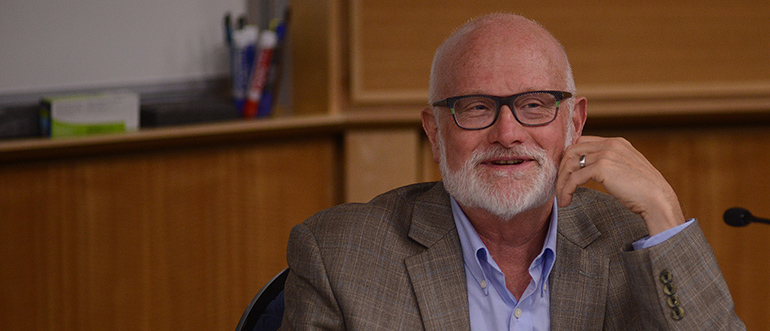The Covid-19 crisis looked like it might be a moment of universal solidarity. Indeed, most Americans (and most others throughout the world) have come together to meet this unprecedented challenge. This has included nearly universal public support for health workers, first responders, and the many, many hourly and casual workers who are keeping the whole of the Western world running at some risk to themselves.
But, as we know, this has not stopped politics, and here in the U.S. we’ve seen a smattering of small anti-lockdown demonstrations emerge. These are probably not spontaneous and they of course fit a political playbook that pro-Trump interests think will benefit him in the Fall.
They fit into a pattern I’ve noted before, that contemporary politics is increasingly cultural and increasingly defined by a performative agonism fitted to the media age.
But these protests are not virtual performances, they are real and embodied, and their participants pose an actual, known, physical danger to themselves and to the wider community. This contradiction has been noted and commented on, but with little insight into how it makes sense or can be made to make sense for its participants.
This kind of cultural sense-making is the central concern of cultural studies and specifically of media studies scholarship: all of this resides at a boundary between these two conceptual and practical realms: culture and media.
So, it is up to us to try to explain this.
It really does illustrate how “culture is everything.” And by this I mean to suggest that our received ideas of politics need to be tuned to an age when—at least for some—what we would think of as concrete “interests” can be “trumped” [sic] by “culture” or where the latter becomes such a salient interest that people actually propose to sacrifice lives for the sake of (what they consider to be) a compelling cultural narrative.
For media scholarship this involves recognizing the shifting sands where culturalism needs to re-think its commitment to a nearly-exclusive focus on material, class, racial, and other interests and begin listening to the voices at the center of such politics as they describe what these cultural “interests” are (however self-destructive and self-contradictory they seem). It also means that our scholarship needs to begin taking seriously things that we’ve long ignored, including religion.
There I said it.
Those who have joined these protests (some openly defying appropriate self-distancing measures) fit into a larger narrative of grievance that merges nostalgia for a lost past with masculinism and re-affirmation of traditional gender roles, and with a desire to once again re-mark the culture in certain ways, with religion acting as a powerful and probative index of this constellation of values. In this discourse, religion serves as less of a moral or spiritual “first cause” and more of a marker of a “structure of feeling” that makes nonsense into sense.
It nonsense but it is powerful nonsense. While they are not about to put themselves in harm’s way by going out to protest, voices such as Texas Lt. Governor Dan Patrick and erstwhile moral-compass-of-the-nation Bill Bennett have articulated a masculinist vision that makes protest against public health measures into heroic acts of self-sacrifice. They evoke a sense of purpose (in which I see traditional masculinism) that neatly calls into being broad nativist narratives of protection of the home and the homeland against external forces of pollution and danger.
And of course religion is there, at the center. It quickens the narrative, a kind of cultural “leavening” which at the same time legitimates and implicitly elaborates the systemic moral center of these ideas and also serves as an explicit interest in the midst of all of this. One of the things being grieved in the protests is the impact that stay-at-home orders have on “religious liberty.” This in spite of the fact that the vast majority of religious leaders and movements the world over have complied with public health guidance. And in spite of the fact that religious liberties of the white Christians who are at the center of this discourse are not in any real sense—and never have been—under assault in the United States. (Minority religions such as Native American practices have faced sanction throughout our history, but not majoritarian white Christianity).
What has been under assault is a certain vision of U.S. culture, one what sees the past 70 years or so as a gradual retreat from the mid-20th Century accommodation of religious and secular power in the “establishment era” of American Protestantism. For most of us, this has seemed to be a natural and rational evolution and the kind of secularization that would naturally emerge in an increasingly culturally and intellectually diverse nation. For others, though, this period has been a succession of horrors, and the politics of the turn of the 21st Century have found a way (powerfully instantiated in religious media) to articulate that sense of panic and grievance, embodied most recently in the contradictory alliance of conservative Protestantism with Donald Trump.
The narrative that attracts and motivates the martyrdom of the anti-lockdown protesters is a powerful one for them and for many others.
There is much more to be said about all of this. Each of these strains of cultural history, discourse, and narrative deserves much more attention than I can give it here. This is an outline.
But my point remains: for culturalist media scholarship, our research materials are at the very center of these troubling times. Culture is our business, as it were. It is our job to build knowledge about how cultural narratives and cultural markings are constituted, how they work, how they make sense to certain interests and how they elide contradictions.
People who willingly resist rational, secular, scientific authority, and put themselves in harm’s way for the sake of grievance, nostalgia, and a return to an imagined past marked by religious and gendered traditionalism and nativism demonstrate that our received focus on material and practical “interests” has been missing something. The times are showing us what we should have been able to see all along. That is that in certain ways and certain places,
Culture is everything.

